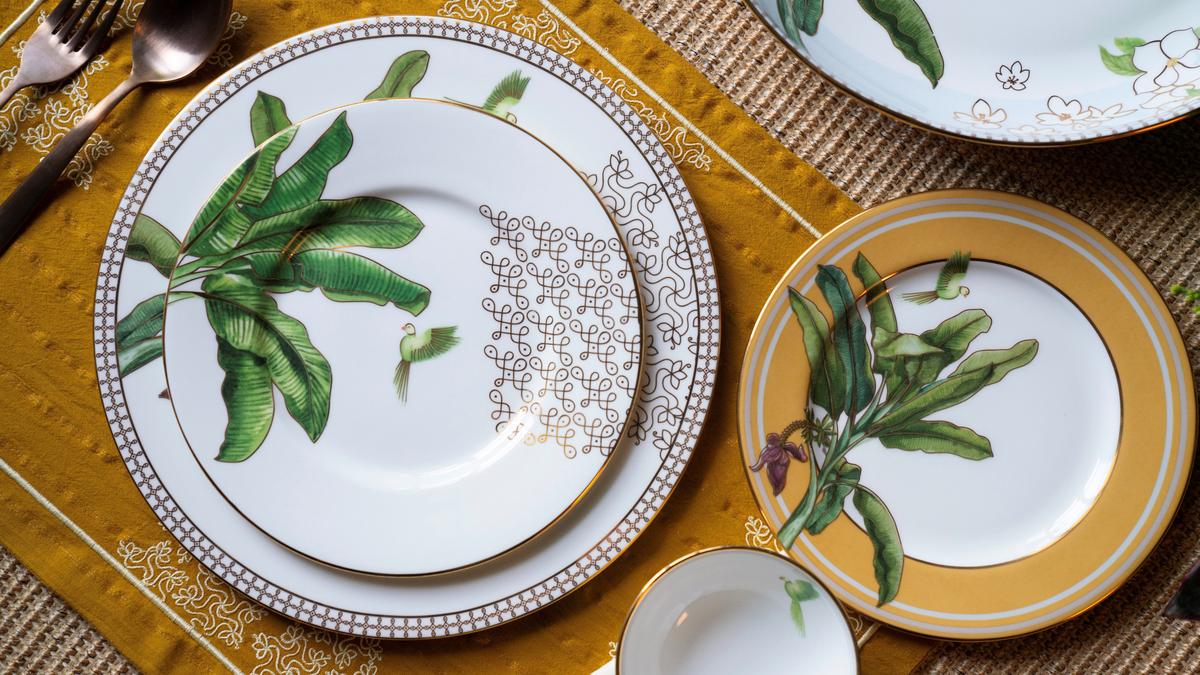
With 22 carat gold bands and elegant motifs, this Chennai brand’s dinnerware will make you want to throw a party soon
The Hindu
Aura Design’s just launched collection of crockery, table linen and stationery is on display at Amethyst this weekend
There are walk-in closets, we know. But Anusha Ashyanth has a walk-in crockery closet that is brimming with exquisite pieces bought from her travels around the world. And now it also has collections created by her. “My wardrobe is smaller than my crockery closet,” laughs Anusha who stated Aura Design in December 2019. The company specialises in dining ware and stationery, something that Anusha wanted to do after she finished her Visual Communication course at MOP Vaishnav College for Women.
“Art is a crucial part of my life,” she says. But she had to wait for 18 years before she could start her brand. “Life had other plans. I got married, had children. The kids have grown up, so now is the time to do what I love,” she says, adding, “Crockery needs lot of R&D. We had to understand it, the way its fired, etc. That took 18 months.”
And finally in 2020 Aura unveiled its line of crockery. “We launched four collections in one go. They were based on history of art and inspired by Baroque, Renaissance, Art Noveau and Medieval art,” she says.
Aura’s new drop this year includes four collections with names that sound poetic. Nizam-e-Gul, Ashrafi, Kanika Vriksha and Verandah. The foundation for this is traditional design and art that prevails in India with an aesthetic modern touch added to it.
The inspiration for each is diverse. Verandah captures the essence of the charming, old world balconies of Kolkata. These are depicted on the crockery in the form of green balusters entwined with pink bougainvillea. Kanika Vriksha has elements drawn from Tamil Nadu. You can see banana trees, goddess Andal’s parrot, and kolam designs in 22 carat gold. Inspired by the chintz motif, Nizam-e-Gul, with its bright pink flowers and green leaf motifs, is like a garden in full bloom. While Ashrafi, with Bidri patterns crafted in gold and platinum, sees a departure from the usual white, pink, green colour scheme that the former three ranges showcase.
There are charger plates, dinner and side plates, tapas plates, big and small serving bowls, drink ware, tea pots and cups, all made of bone china. “It takes a month or two to come up with an idea. Designing takes two months and production takes another five months. We consciously stay away from Pinterest and Shutterstock,” she says. After the designs are finalised, they are sent to vendors who create the final product.
“The process sounds simple but is not.” Usually, the initial colour on paper looks different from the one on the computer screen and on wares. By the time it matches, it takes six to eight months, she explains. “For example, it took eight tries to get the green right in Kanika Vriksha,” says Anusha.











